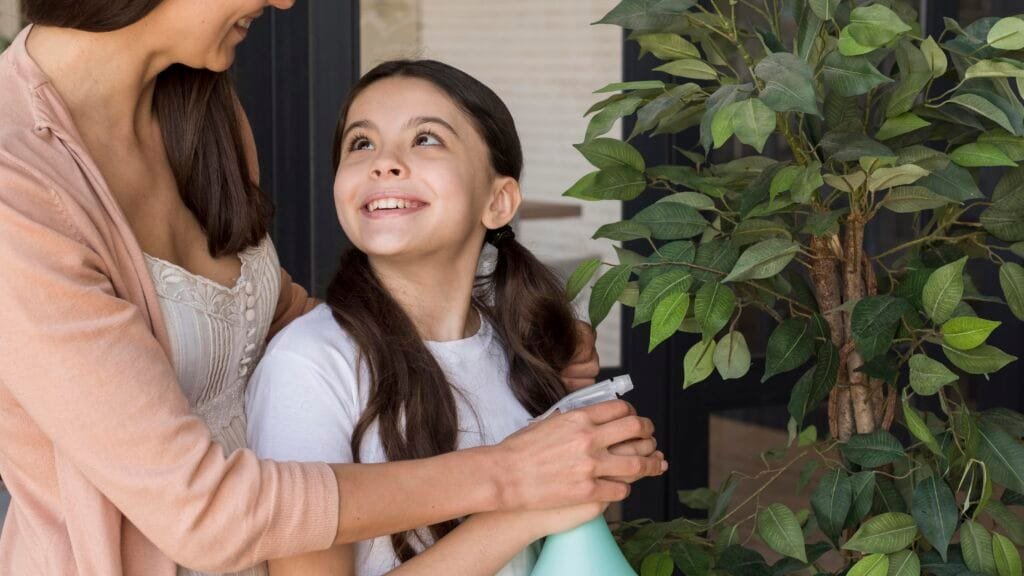Introduction
As a parent, you have the incredible opportunity to shape your child’s communication skills and emotional development by interacting with them daily. Speaking with intention, awareness, and compassion – in other words, mindful communication – is one of the greatest gifts you can give your child.
Communicating with your child is one of the most important skills you can develop as a parent. Mindful communication means speaking with intention, awareness, and compassion. This type of communication strengthens your bond with your child and helps them feel heard, respected, and loved.
As you read through the benefits and practical tips below, reflect on your own communication habits with your child. Where are you already communicating mindfully? Where is there an opportunity for growth? Remember, every interaction is a chance to deepen your connection with your child.

Benefits of Mindful Communication
You may be wondering, what’s really in it for me and my child to make the effort to communicate more mindfully? The short answer is – so much. Mindful communication has the power to transform your relationship with your child and set them up with skills for success and happiness in life.
Mindful communication with your child has many benefits:
- Builds trust and connection
- Helps your child feel valued
- Models healthy communication skills
- Reduces conflict and misunderstanding
- Supports your child’s emotional development
“The way we talk to our children becomes their inner voice.” – Peggy O’Mara
When you speak to your child with patience and respect, even when setting boundaries or giving constructive feedback, you give them a template for how to communicate with others and with themselves. You help shape their self-talk to be kind and compassionate.
These benefits have a ripple effect – when your child feels secure in their relationship with you and has a healthy inner dialogue, they are better equipped to navigate challenges, build relationships, and thrive. In the next section, we’ll look at specific strategies you can start using today to communicate more mindfully.
Practical Tips for Mindful Communication
Now that we’ve explored the why of mindful communication, let’s dive into the how. These practical tips can be implemented right away in your daily interactions with your child. Remember, perfection isn’t the goal. What matters is your intention and your commitment to keep trying.
Listen actively – Give your full attention when your child is speaking. Make eye contact, put away distractions, and listen to understand, not just to respond.
- Benefit: Active listening helps your child feel heard and validated. It shows them that what they have to say matters to you.
Reflect and validate feelings – When your child expresses an emotion, reflect it back to them. “You seem frustrated that we have to leave the park now.” This helps them feel understood.

- Benefit: Reflecting feelings builds emotional intelligence. Your child learns to name and accept their emotions.
Use “I” statements – When expressing your own feelings or needs, start with “I”. “I feel overwhelmed when toys are left out” instead of “You never clean up.” This prevents blame and defensiveness.
- Benefit: “I” statements model ownership of feelings and healthy expression of needs. They reduce conflict.
Ask open-ended questions – Encourage your child to share their thoughts and feelings. Ask questions that can’t be answered with just “yes” or “no.”
- Benefit: Open-ended questions invite your child to open up and share more. They help you understand your child’s perspective.
Take a pause – If emotions are running high, take a break before responding. Take a few deep breaths or say “I need a moment before I respond.”
- Benefit: Pausing prevents reactive responses you might regret. It models emotional regulation.
The ego or inner critic might say “I don’t have time for this” or “My child should just listen and obey.” Mindful communication asks you to set those reactions aside and approach your child with openness and compassion.
As you practice these tips, notice how they influence the tone of your interactions with your child. Celebrate the small wins and learn from the moments of struggle. With time and consistency, mindful communication will start to feel more natural.
Conclusion
Mindful communication is an ongoing practice, a muscle we can strengthen over time. As we bring this post to a close, I invite you to set an intention for your communication with your child moving forward.

Communicating with intention is a practice, not a perfection. There will be moments when you fall short of your ideals. What matters is the overall tone you set in your relationship with your child. Mindful communication creates a foundation of trust, respect, and emotional safety. And that is a gift that lasts a lifetime.
If you found value in this post, know that this is just the beginning. There is always more to learn on the journey of mindful parenting. If you’d like to dive deeper with personalized support, I’m here to help.
Call to Action:
If you would like support in developing mindful communication skills with your child, I offer private coaching sessions. Contact me to learn more and schedule a session.




